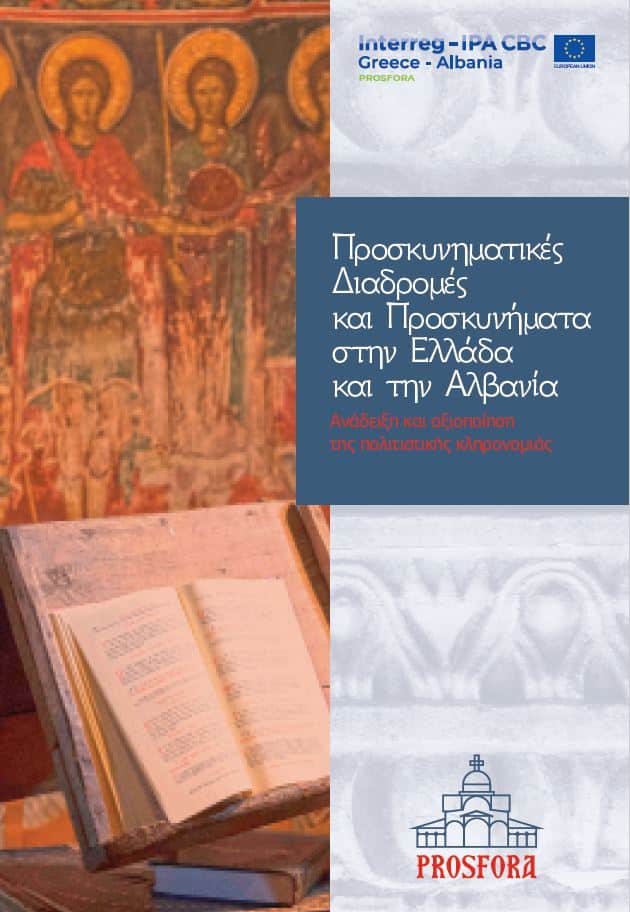HISTORY
Voskopojë is an important historical, cultural and tourist center. It is noted for its architectural monuments, the picturesque landscape and the excellent climate. It is located on a high slope, about 1200 m above sea level and extends between the mountains of Opari and Ostrovicë. From the east side, the hills descend smoothly and form a valley, which is the only natural entrance to Voskopojë. The place is very rich in forests, pastures and water sources.
Known since the 14th century, Voskopojë experienced amazing economic and spiritual prosperity at the beginning of the 18th century. The “New Academy” (1744), its Library and Printing Press, the first in the Balkans, gained a great reputation. This educational institution contributed to the dissemination of education and to the formation of a vibrant intellectual movement. The city was adorned with about twenty-two temples, which were noted for their impressive gilded wood-carved iconostasis, the wood-carved pulpits and despotic thrones, the ornate apartments of the cantors, but also their complex frescoes, elements that gave them unquestionable grandeur and which at the same time reflected the wealth and power of the city.
Until 1670, Voskopojë belonged directly to the Archdiocese of Ohrid, while then it came under the jurisdiction of the Holy Metropolis of Korçë. At the beginning of the 18th century, the city had fourteen districts, covering an area of 1800 acres. The spotlight of the districts was the complexes of religious institutions.
Despite its flourishing, the society of Voskopojë could not react to the successive catastrophes of 1769, 1772 and 1780 and could not, subsequently, reach the level of development it had before them. Hundreds of Voskopojë families were forced to migrate to Korçë, Janina, Delvinaqi, Ambelakia, the Monastery, Ohrid, Budapest, Vienna, Kleisoura and other urban centers.
The church of Saint Nicholas is one of the most brilliant temples in the city. It was erected in 1721 in the Rue district. Architecturally, it is a three-aisled basilica, with internal dimensions of 19.7 x 11 m. It consists of the main church, the narthex and the portico on the south side. The trapezoidal-shaped narthex has a series of columns in the center, which are connected to each other, as well as to the perimeter walls, by a system of bows, forming rectangular compartments housed with semi-cylindrical arches. The portico, which extends across the south side of the main temple, is open with arches on low stone columns, which rest on a low bench. The tower of the belfry rises southeast above the entrance of the courtyard of the temple. In this area before 1916, the year when a large fire broke out, there were other buildings, such as the chapel of Saint Euthymius and cells that probably served the needs of the existed monastery.
The masonry of the temple is elaborate, made of carved stones connected with plaster, forming very thin joints. The levels of the layers of the masonry are emphasized on the east side, where there is apse with blind arches and ends with a mud-brick fishbone-shaped decorative ribbon. In contrast to the masonry of the main church, the masonry of the porch has a rich decoration that is achieved thanks to the combination of bricks and limestone, as well as due to the use of various subjects, cornices and strips.
According to the founding inscriptions, the temple was decorated in 1726 by the painter David Selenica, known for his works on Mount Athos, Kastoria, Thessaloniki and elsewhere, with the help of Constantine and Christos. The portico was painted in 1750 by the brothers Constantine and Athanasius, who due to their profession were called “Painters”. For more than forty years, the Painter brothers gained a great reputation, which is proved by the fact that they managed to take several orders for the painting of some of the most important monuments of their time.
At the southern entrance of the temple is preserved the image of the founder and owner Hatzigeorgiou of Voskopojë offering the temple to the enthroned Saint Nicholas, with the inscription between them «Ἠγάπησα, Κύριε, τὴν εὐπρέπειαν τοῦ Οἴκου Σου καὶ μὴ συναπολέσῃς μετὰ τῶν ἁμαρτιῶν τὴν ψυχή μου» (“Lord I missed so much living in your temple. Do not testify against my soul to the sinners”). The first phase of the painting of the church took place, during the time when Joasaph, a distinguished and eminent hierarch from Korçë, was the archbishop of Ohrid and Metropolitan of Korçë, and the second phase was completed during the reign of Metropolitan Nikiforos of Korçë.
The wood-carved iconostasis of Saint Nicholas of Voskopojë is preserved to this day in the homonymous church of the village of Vlasti, in the prefecture of Kozani. It is rumored that it was transported to the area, after the destruction of the city, in 1769 by the priest Georgios Sinas.













